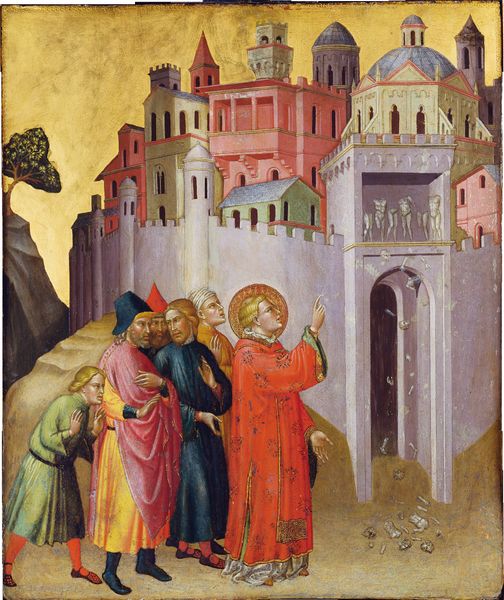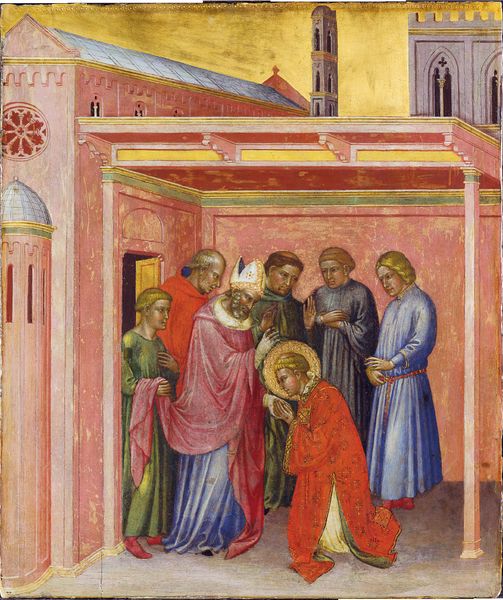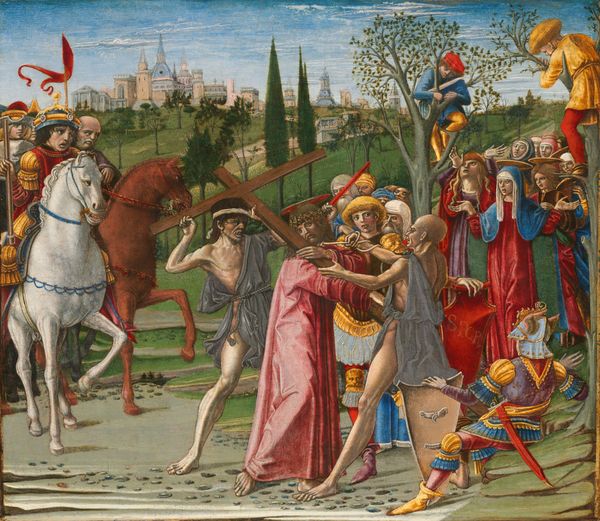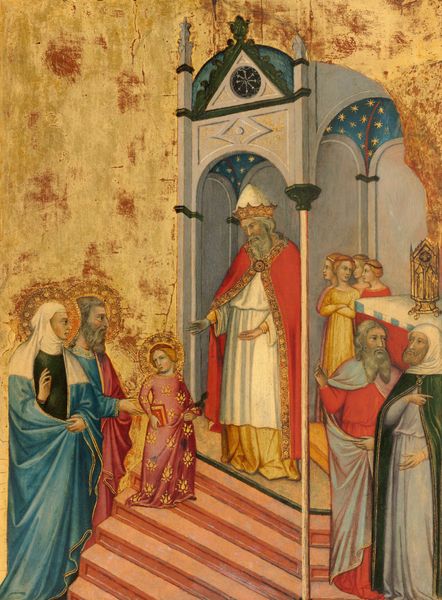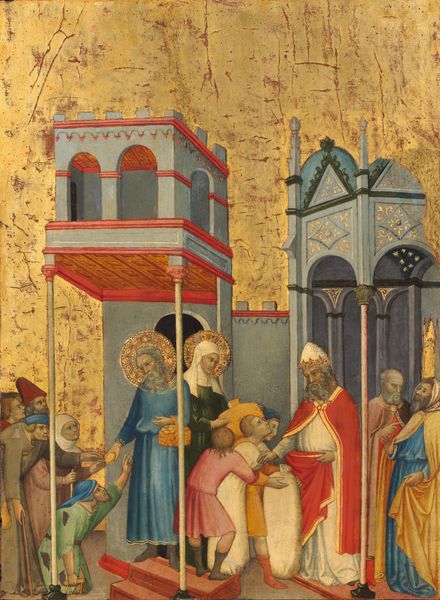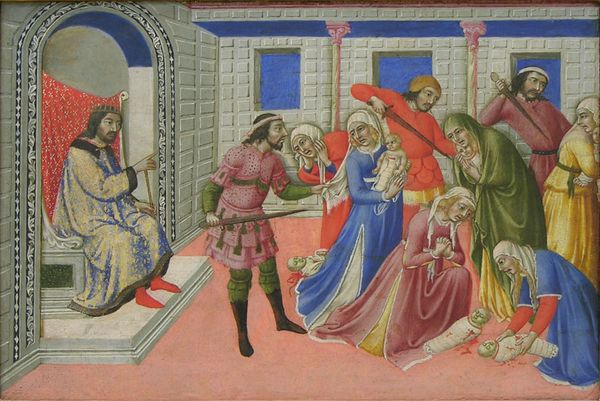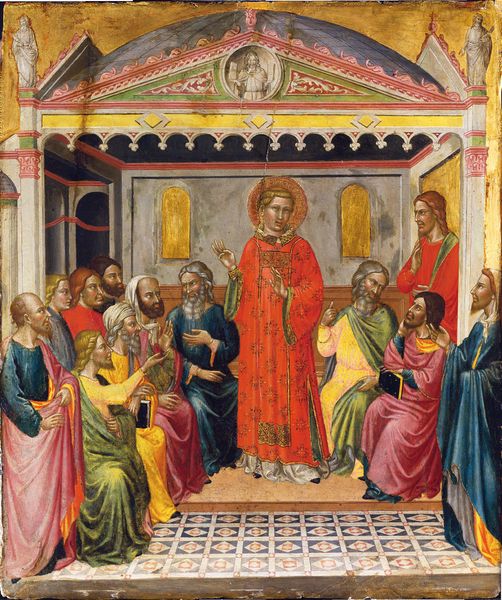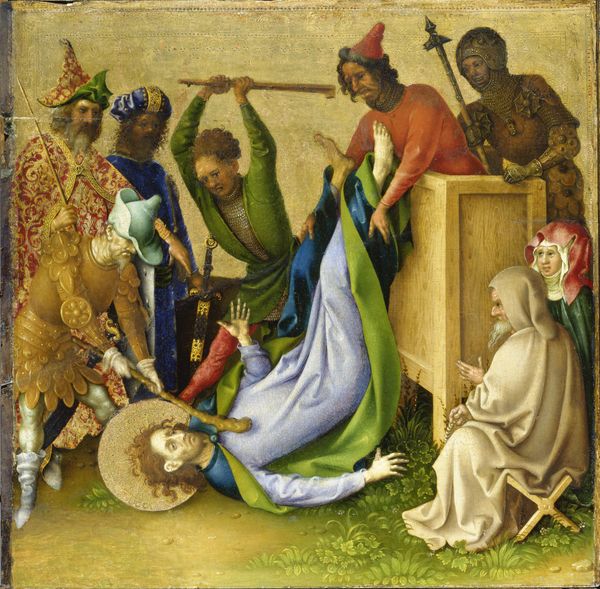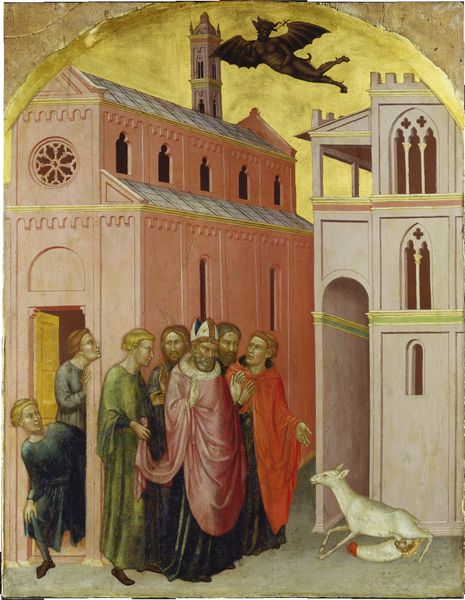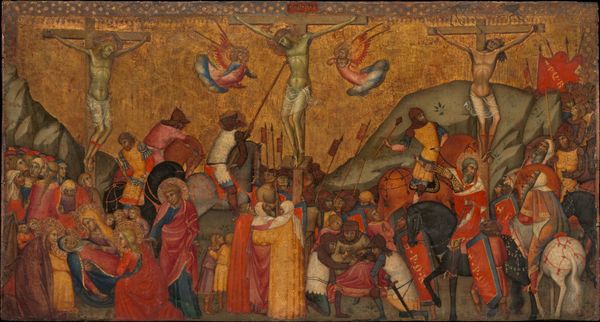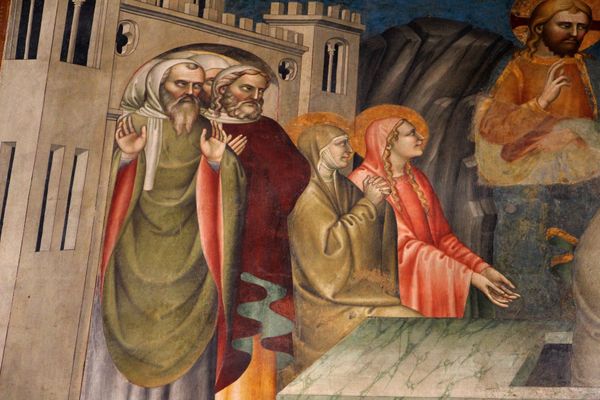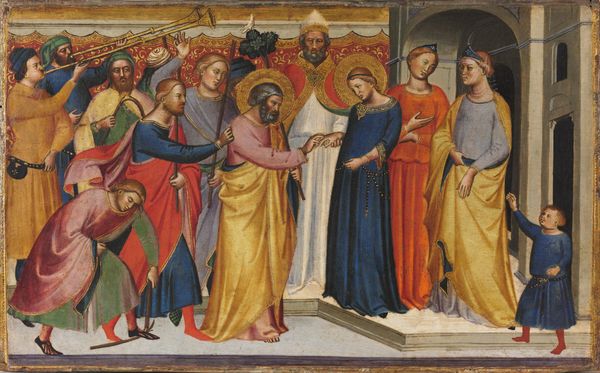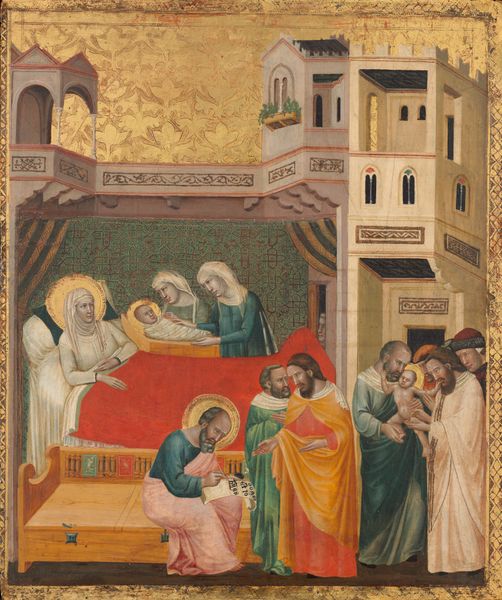
tempera, painting
#
medieval
#
narrative-art
#
tempera
#
painting
#
landscape
#
figuration
#
oil painting
#
painting art
#
history-painting
#
italian-renaissance
Dimensions: 69.4 x 67.7 x 1.9 cm
Copyright: Public Domain
Curator: This is Martino di Bartolomeo’s "Stoning," a tempera on panel painting from about 1390, currently housed in the Städel Museum. It depicts, rather graphically, the stoning of a saint. Editor: It’s visually quite arresting, isn't it? The violence juxtaposed with the almost fairytale-like architecture creates a strange tension. Look at the layering of color and the very obvious presence of egg tempera. I’m curious about the materiality of the paint itself; its components and how that contributes to the artifice of the landscape. Curator: The stoning of a saint as subject matter fits within a long tradition of depicting martyrdoms, which served various didactic purposes within the church and in civic life. It highlights the religious zealotry of the period. Editor: And the process of creation? Think of the apprenticeship required to master tempera. These weren’t off-the-shelf paints. Pigments were painstakingly ground, mixed, the surface primed, layer upon layer...The labor is palpable. Curator: Absolutely. The patronage system also played a key role. A commission like this likely came from a wealthy individual or a religious order, further emphasizing the intertwined relationship between art, power, and faith in late medieval Italy. We must acknowledge, too, how it would have been consumed and viewed by the audience in the medieval era. It's easy to see why a medieval audience would have been taken aback by the scene on display here. Editor: Yes, and the selection of the panel as a base itself is noteworthy. It is likely sourced locally, processed in particular way. The frame around it too… Each material choice is deliberate, influenced by available resources, cost, and the intended market. I would consider it similar to a form of high-level craftmanship. Curator: Well, considering this work today, it invites us to contemplate the role of violence in both religious narratives and its presence throughout art history. Editor: I agree. By understanding the materiality, and the handcraftmanship involved, we gain a richer understanding of its place, production, and cultural significance.
Comments
Join the conversation
Join millions of artists and users on Artera today and experience the ultimate creative platform.
